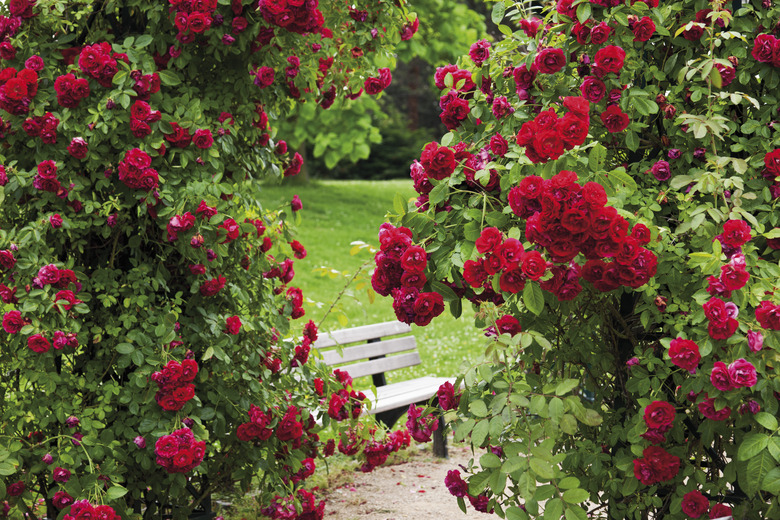The Best Homemade Spray For Black Spots On Roses
We may receive a commission on purchases made from links.
Any gardener who has grown roses (Rosa spp.) has seen black spot up close — too close and too frequently, for this disease plagues most roses. Some are completely disfigured by it, while some succumb to just a few spots. But, however dire the condition, you can first address it with homemade black spot sprays before you resort to a chemical fungicide or an extreme pruning.
The Best Cure: Prevention
The Best Cure: Prevention
The best "homemade" cure for black spot on roses is to prevent it in the first place. Choose disease-resistant cultivars, for starters. Because black spot is so ubiquitous among roses, most hybridizers make a great effort to develop varieties that can resist it. All the big hybridizers — Jackson & Perkins, David Austin, Edmunds, Heirloom Roses and more — offer disease-resistant varieties.
If you just have to have a particular rose, however, be sure to provide an environment that discourages fungal diseases such as black spot. This means practicing good sanitation by controlling weeds and removing plant debris. To keep the leaves dry, avoid watering from overhead. To prevent crowding, prune and deadhead, which ensures good air circulation around your bushes. Finally, provide optimal conditions in all the conventional ways, i.e., enough sun, water and fertilizer to keep your plant healthy in general. A healthy plant is in a much better position to resist disease than a stressed one.
OK, but now you have it: those ugly black spots on your roses — and once they appear, they never go away during that growing season, staying until the leaf drops from the plant. So, start your spraying program as soon as possible to prevent those spots from trashing your entire plant.
Some Gardeners Swear by Milk...
Some Gardeners Swear by Milk...
Milk has proven in some settings to be effective against fungal diseases, especially black spot. This method is promoted by University of Minnesota professor Jeff Gillman, a horticulturist known for his exacting approach to both organic and synthetic products and practices. On the flip side, renowned gardening myth-buster Linda Chalker-Scott, horticulturist at Oregon State University, notes that there's no scientific evidence to support the claim that milk controls black spot on roses. With such conflicting academic reports, you may want to give it a go and see how it works for you.
Combine 1 part milk and 2 parts water in a spray bottle — and go to it. Wet both the tops and bottoms of the leaves, and remove all diseased leaves or other debris from under the rose. Apply once per week or every other week.
Ideally, apply before you notice black spot or any other fungus such as powdery mildew. This method is, like most methods, not a cure for the existing condition but more a prevention strategy that should help avoid the spread of black spot.
...And Some by Baking Soda
...And Some by Baking Soda
In addition to milk, a baking soda (sodium bicarbonate) solution is also popular for treating black spot. The typical mix is 1 heaping tablespoon of baking soda to 1 gallon of water. Most horticulturists recommend adding some horticultural oil or soap which will help the mixture stick to the plant.
There's no real scientific basis or testing related to this formula, and some experts recommend using potassium bicarbonate instead, which is claimed to be up to 35 percent more effective than baking soda and less potentially harmful to plants.
Whatever method you use, try a test on a few leaves first, then wait a few days to make sure there are no adverse reactions. Baking soda is alkaline and too much can be phytotoxic.
